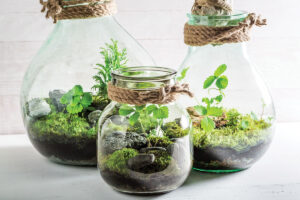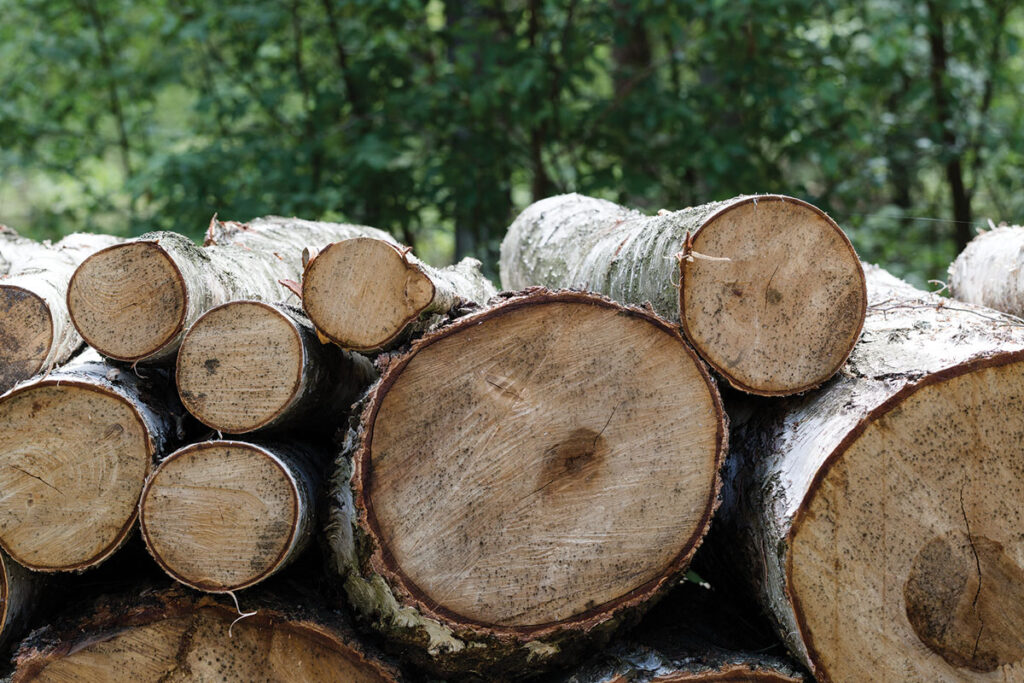
Gardening trends seem to come and go, but growing houseplants will always be a staple in the garden world. What changes though, are the different methods of growing these types of tropical plants. Gone is the traditional rubber plant in a wicker basket with moss. In come trendy dish gardens, terrariums, and even kokedama (bet you’ve never heard of that), otherwise known as moss balls or string gardens.
You can walk into most garden centers today and find a section for fairy gardens and terrarium plants. Fairy gardens are cute, but terrariums have a great advantage as an indoor garden in my opinion because of the relative ease of care and minimal supplies needed.
A terrarium is simply a clear glass or plastic container filled with small plants that is either tightly closed, or an open, transparent container for growing and displaying plants. Everything from mason jars, fish bowls, light bulbs, Christmas ornaments, vases and glass blocks can be used as a container, as long as they are clear enough to allow light to enter.
The advantage of having a closed terrarium with a lid is that the amount of watering needed is very minimal, maybe every 4-6 months at most. A quick online search will result in various news stories of gardeners reporting to have only watered their terrarium once in the last 50 plus years. Now that is low maintenance!
Closed terrariums work because their sealed space creates an entirely self-sufficient ecosystem in which plants can survive by using photosynthesis to recycle nutrients. The water in the container gets taken up by plants’ roots, is released into the air during transpiration, condenses down into the potting mixture, where the water cycle begins again.
How to assemble a terrarium
Construction of a terrarium begins with adding about a one-half-inch layer of drainage material to the bottom of the container that can collect excess water. This can be rock, gravel, decorative stones or activated charcoal in the case of closed terrariums. Activated charcoal in a closed container helps absorb chemicals that could buildup and become toxic to plants.
Next, the growing medium is added, which should be a potting mix that is sterile, well drained and high in organic matter.
Lastly, take your chosen terrarium plants from their pots and remove extra growing medium to expose the roots, then insert the roots into the growing media. At the garden center, you will find plants specifically for miniature gardens that have been selected for a slow growth rate. Try to choose plants of varying heights to add interest and texture to the design. Be sure to choose plants with similar light and water requirements.
After planting, mist the plants to wash off growing medium that has stuck to leaves or sides of the container. Allow the container to remain open until the foliage is thoroughly dry.
Finish off the container with accessories to make your terrarium unique. Just about anything can be added to a container, as long as it’s clean and doesn’t introduce an insect or disease. Sea shells, rocks, ornaments, toys, trinkets, dried materials, and branches are all great things to add personality.
Once planted, terrariums are quite low in maintenance. Just be sure to avoid overwatering the container, as this is by far the easiest way to kill a terrarium. Routinely remove any dying or yellowing leaves, turn the container occasionally to keep the plants growing upright normally, and some pruning and pinching may be required based on the growth rate of your plants.
Follow those steps and a low maintenance way to grow plants indoors is easily attainable.









